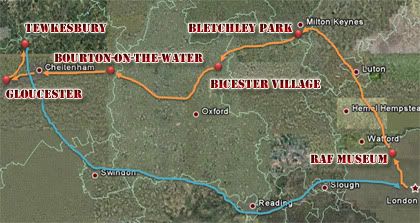
RAF Museum, London
Just a short stroll inside one of the museum's halls. An opportunity to calibrate the cameras and take a breath before heading north towards Milton Keynes.
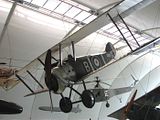
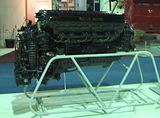






Bletchley Park
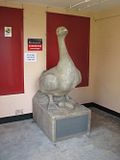 "The Geese that laid the golden eggs but never cackled". That's how Churchill described Bletchley Park and its codebreakers, the best-kept wartime secret that was revealed in 1974 in a book called "The Ultra Secret". Its author had worked in Bletchley Park during World War II and wrote the book based on memory.
"The Geese that laid the golden eggs but never cackled". That's how Churchill described Bletchley Park and its codebreakers, the best-kept wartime secret that was revealed in 1974 in a book called "The Ultra Secret". Its author had worked in Bletchley Park during World War II and wrote the book based on memory.It is often said that without the cracking of the codes used by the Axis forces, the war would have lasted an estimated two more years, which would mean another 20 million lives lost. I don't know if I'd agree or not, mainly because I don't know whether the Allies would have won all those critical late-war battles without the intelligence superiority that Bletchley Park offered. Perhaps the massive US war production machine, the Soviet armies and a hypothetical atomic bomb on Germany instead of Japan would have been enough. In any case, the codebreakers in Bletchley Park provided the Allies with the most important of all weapons in the history of warfare: the ability to read the enemy's plans.
 Take an example from the 1941 Battle of Cape Matapan. As British ships were escorting troop convoys to Greece, intelligence was received reporting the sailing of a mighty Italian battle fleet (one battleship, six heavy and two light cruisers plus destroyers) to attack the convoys. The British gathered a large fleet, ambushed and destroyed the Italian fleet. This was made possible by the decryption of intercepted signals in Bletchley Park, but it was concealed from the enemy by ensuring there was a plausible reason for the Allies to have detected the Italian fleet. In this case, the British sent a carefully directed reconnaissance plane, so that the Italians would think that it was the plane that spotted them.
Take an example from the 1941 Battle of Cape Matapan. As British ships were escorting troop convoys to Greece, intelligence was received reporting the sailing of a mighty Italian battle fleet (one battleship, six heavy and two light cruisers plus destroyers) to attack the convoys. The British gathered a large fleet, ambushed and destroyed the Italian fleet. This was made possible by the decryption of intercepted signals in Bletchley Park, but it was concealed from the enemy by ensuring there was a plausible reason for the Allies to have detected the Italian fleet. In this case, the British sent a carefully directed reconnaissance plane, so that the Italians would think that it was the plane that spotted them.Apart from a vital World War 2 weapon, and probably equally significantly, Bletchley Park was the birthplace of the computer. Colossus, the world's first programmable, digital, electronic computer was invented and built at Bletchley Park to speed up the reading of encrypted German messages.
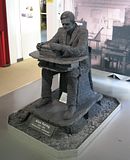 A key figure in Bletchley Park was Alan Turing, possibly the most important figure in the history of Computer Science. Turing read Mathematics in Cambridge, where his monumental work started with a dissertation on the central limit theorem. A bit later he published his paper "On Computable Numbers, with an Application to the Entscheidungsproblem", which eventually led to the Turing Machine. He obtained a PhD from Princeton in 1938 and then returned to Cambridge. Together with several other brilliant minds from Cambridge and other universities, he was recruited to work in Hut 8 of Bletchley Park when the war started. In his own words, Turing decided to tackle the particularly difficult problem of cracking the German naval Enigma machine "because no one else was doing anything about it and I could have it to myself". The Enigma system was cracked and the Allies gained an immense intelligence advantage over the Axis.
A key figure in Bletchley Park was Alan Turing, possibly the most important figure in the history of Computer Science. Turing read Mathematics in Cambridge, where his monumental work started with a dissertation on the central limit theorem. A bit later he published his paper "On Computable Numbers, with an Application to the Entscheidungsproblem", which eventually led to the Turing Machine. He obtained a PhD from Princeton in 1938 and then returned to Cambridge. Together with several other brilliant minds from Cambridge and other universities, he was recruited to work in Hut 8 of Bletchley Park when the war started. In his own words, Turing decided to tackle the particularly difficult problem of cracking the German naval Enigma machine "because no one else was doing anything about it and I could have it to myself". The Enigma system was cracked and the Allies gained an immense intelligence advantage over the Axis.In 1945, Turing was awarded the Order of the British Empire for his wartime services, but his work had to remain secret for many years, as Bletchley Park was a state secret. Turing was homosexual and when the authorities found out about it in 1952, he was charged with Gross Indecency and was chemically castrated. Due to his conviction he lost his security clearance and could not any more work for the government. Two years later, he committed suicide by eating an apple that contained a cyanide capsule, recreating his favourite scene from "Snow White".
Today, the Turing award is the most prestigious award that a computer scientist can receive. It is the Computer Science equivalent of the Nobel prize.

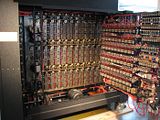


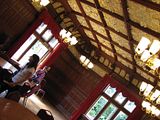

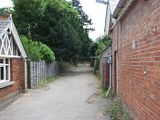
In order to survive financially, Bletchley Park offers its space for corporate meetings, weddings and other events, and even hosts other private museums. As a result, it has become a rather curious museum mixing codebreaking exhibits with dollhouses, model ships, stamps etc.
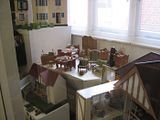

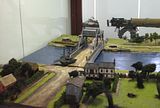
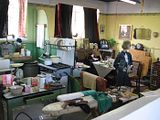
You need to take the guided tour to get a better idea of what is what, but even the tour is quite eccentric. In any case, it was nice walking inside the buildings where Turing and his colleagues were working.
After heavy education, a light shopping break had to follow.
 Bicester Village Outlet Centre
Bicester Village Outlet CentreThat's a complex of over 120 designer stores, which was built to look like a traditional English village. One can easily find 80% off designer clothes bargains there. If I were the shopping kind, I'd probably love it, but I'm not. Not that it's bad. It's certainly better than your usual city centre shopping mall. Not a single generalist bookshop though! Even Westfield has a Foyles.
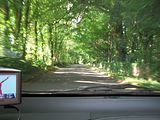
Next, one of the most beautiful places in Europe; the Cotswolds. Oxfordshire is beautiful, but nothing compares to the Cotswolds. You realise this as soon as you get out of the A40 and start heading north towards the villages under the cover of the trees. Bliss.
Bourton-on-the-Water
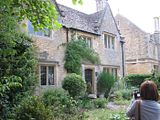 "Venice of the Cotswolds", presumably because of the stream and the footbridges. I see no point in this nickname, as Bourton-on-the-Water is so overwhelmingly picturesque that it doesn't need tourists lured with Vegas-like tricks. The village looks tiny, but it has 4,000 inhabitants. In fact, technically it should be considered a town.
"Venice of the Cotswolds", presumably because of the stream and the footbridges. I see no point in this nickname, as Bourton-on-the-Water is so overwhelmingly picturesque that it doesn't need tourists lured with Vegas-like tricks. The village looks tiny, but it has 4,000 inhabitants. In fact, technically it should be considered a town.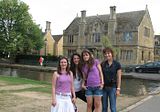

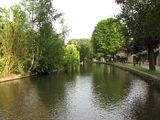
 We arrived quite late and didn't have the chance to visit the museums and other attractions (Birdland, motoring museum, Model Railway, Dragonfly Maze, roman road, etc.). I need to go again soon, especially for the 1:9 model of the village. It was built by local craftsmen in the 1930s and since it is so large, it includes itself (model within a model :o). It's not like the Cotswolds look bad in the winter ;).
We arrived quite late and didn't have the chance to visit the museums and other attractions (Birdland, motoring museum, Model Railway, Dragonfly Maze, roman road, etc.). I need to go again soon, especially for the 1:9 model of the village. It was built by local craftsmen in the 1930s and since it is so large, it includes itself (model within a model :o). It's not like the Cotswolds look bad in the winter ;).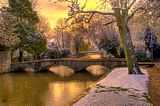
Gloucester
The plan was to stay in Tewkesbury, but since we couldn't find rooms there, we went for Gloucester. Not that it's a boring town. Quite the opposite. It looks quite nice, with its fair share of medieval buildings, pedestrian roads and open-air fares and festivals, but at the time we had the chance to explore it (Sunday early morning) there was nobody in the streets. People started popping out of their houses around 10:30. Tea rooms would open at 11:00, but we had to go.
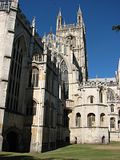

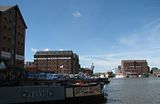
Final stop, Tewkesbury, or Tjuksbree as the locals pronounce it.
Tewkesbury
The town is supposed to have been founded by a hermit in the 7th century.
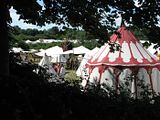 Today it is remembered mainly for the 1471 battle at the "Bloody Meadow", where Edward IV's Yorkist forces defeated the House of Lancaster during the Wars of the Roses. It all started because Henry VI was considered insane and the country lacked a strong leader. Edward of York, the most able leader left, was declared King in 1461. He locked Henry in the tower of London and his wife Margaret of Anjou fled to France with their son, also called Edward. When the young Edward reached 18, Margaret decided to return to England and re-claim the throne for him. She landed at Weymouth on April 14, 1471, and set off for Wales, where her ally, Jasper Tudor, awaited with re-enforcements. On the way to Wales, she met the enemy army just outside Tewkesbury.
Today it is remembered mainly for the 1471 battle at the "Bloody Meadow", where Edward IV's Yorkist forces defeated the House of Lancaster during the Wars of the Roses. It all started because Henry VI was considered insane and the country lacked a strong leader. Edward of York, the most able leader left, was declared King in 1461. He locked Henry in the tower of London and his wife Margaret of Anjou fled to France with their son, also called Edward. When the young Edward reached 18, Margaret decided to return to England and re-claim the throne for him. She landed at Weymouth on April 14, 1471, and set off for Wales, where her ally, Jasper Tudor, awaited with re-enforcements. On the way to Wales, she met the enemy army just outside Tewkesbury.
 The reenactment of the Battle of Tewkesbury is the world's largest of its kind. It attracts thousands of re-enactors and visitors. While the main attraction is the actual battle, this is only between 3 and 4 pm. Until then, you have plenty to do (and buy) in the medieval camps next to the battlefield. Only slightly disappointing bit was the archery competition. Not as interesting as we were hoping for. We didn't even find out who won. No commentating and very few of the re-enactors/competitors were interested in providing a show for the spectators.
The reenactment of the Battle of Tewkesbury is the world's largest of its kind. It attracts thousands of re-enactors and visitors. While the main attraction is the actual battle, this is only between 3 and 4 pm. Until then, you have plenty to do (and buy) in the medieval camps next to the battlefield. Only slightly disappointing bit was the archery competition. Not as interesting as we were hoping for. We didn't even find out who won. No commentating and very few of the re-enactors/competitors were interested in providing a show for the spectators.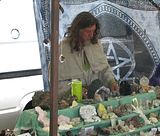
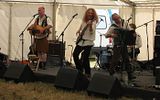
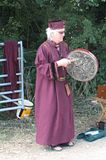
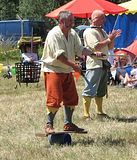

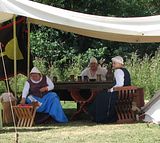
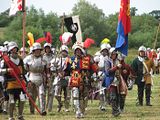
The battle itself, however, was like a football match. A bit boring at times but would get quite exciting when a side would charge or when a duel between champions would take place. Especially the finale with the duel between the two Edwards was captivating.
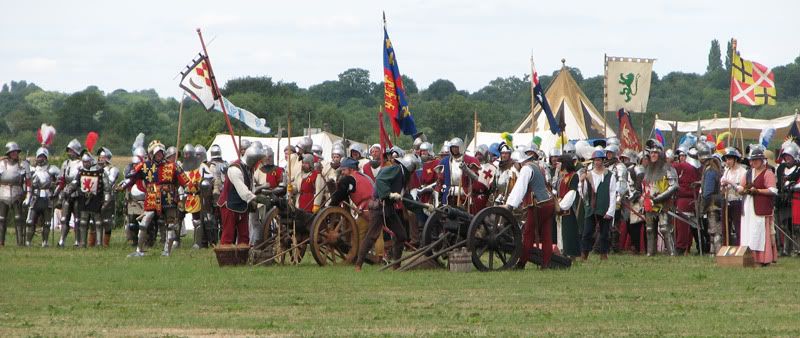
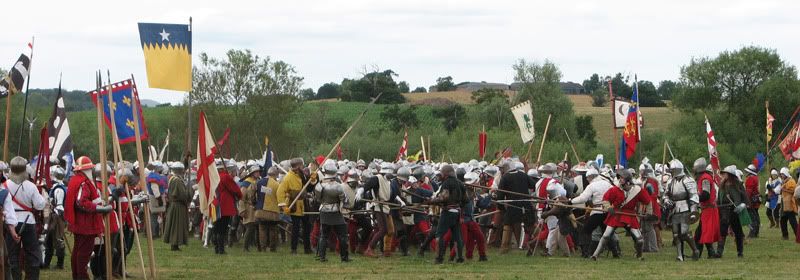


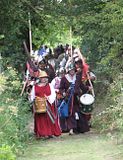
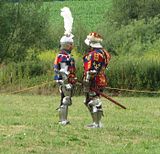


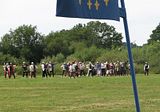



No comments:
Post a Comment